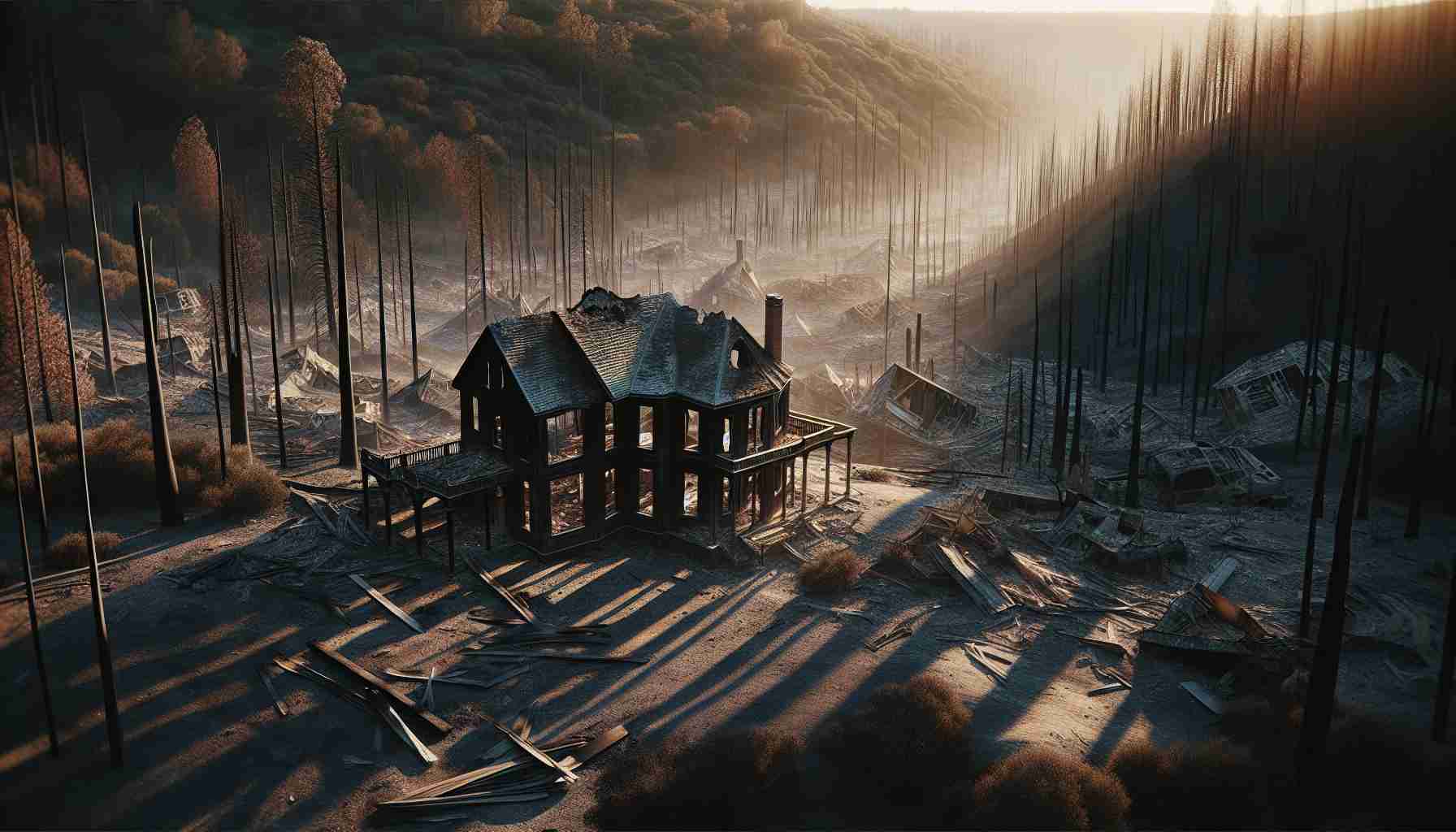The Tragic Toll of California Wildfires on Historic Architecture
California has long been a canvas of architectural wonder, showcasing iconic creations like Frank Gehry’s Walt Disney Concert Hall and the futuristic LAX Theme Building. Yet, as wildfires rage on, the breathtaking Midcentury houses designed by luminaries such as John Lautner and Richard Neutra face imminent threats.
Several historic homes, once safe havens of design, have been lost to the flames. The Zane Grey Estate, a remarkable structure built in 1907, was known for its fireproof features but succumbed to recent fires. Originally designed with reinforced concrete, it included a distinctive library where the famous author penned tales of adventure.
Another tragic loss includes the Andrew McNally House, a stunning Queen Anne-style monument from 1887 that served as a retreat for the Rand McNally co-founder. Its elaborate rotunda and scenic views are now nothing but memories.
The esteemed Will Rogers’ ranch house was also relinquished to the fire, along with its expansive landscape that once thrived as a park. The emotional impact on the Rogers family and the community underscores the tragedy of this loss.
Additionally, the Bridges House, recognized for its striking Brutalist design, tragically fell victim to the flames. Often viewed from Sunset Boulevard, this architectural gem was a significant loss for the region. As California continues to battle wildfire threats, the preservation of its architectural legacy remains uncertain.
California’s Architectural Heritage at Risk: Wildfires and Historic Structures
The Impact of Wildfires on California’s Architectural Treasures
California is renowned for its diverse architectural landscape, with iconic designs ranging from the stunning Walt Disney Concert Hall by Frank Gehry to the whimsical LAX Theme Building. However, as the state faces an increasing threat from wildfires, numerous historic structures, including Midcentury masterpieces by architects like John Lautner and Richard Neutra, are at risk of devastation.
How Wildfires Destroy Historic Structures
Wildfires can spread rapidly, fueled by dry conditions and strong winds, making even the most prepared structures vulnerable. Fire-resistant materials used in designs like the Zane Grey Estate (built in 1907) were not enough to save it from destruction. This loss represents not just an architectural tragedy but also a severing of cultural heritage, as historic homes encapsulate stories and legacies of their time.
Important Architecture at Risk
1. Zane Grey Estate: This estate was built with fireproof materials yet fell victim to a recent wildfire, showcasing the intense challenges faced by even well-designed structures.
2. Andrew McNally House: A Queen Anne-style monument from 1887, it featured unique architectural elements, including an elaborate rotunda. Its destruction highlights the fragility of historical architecture against the backdrop of nature’s wrath.
3. Will Rogers’ Ranch House: This preservation of American history not only embodied the spirit of a beloved figure but also represented the loss of communal heritage and memory.
4. Bridges House: Known for its striking Brutalist design, the Bridges House, often viewed from Sunset Boulevard, signifies the cultural fabric of the area and the aesthetic value lost in fire.
The Importance of Preservation and Challenges Ahead
As these fires rage, the importance of preserving California’s architectural history becomes even clearer. The loss of iconic homes poses a significant challenge for preservationists and local governments. Strategies may include:
– Building Regulations: Implementing stricter fire codes for historic districts.
– Disaster Preparedness: Developing emergency plans that prioritize heritage sites.
– Community Involvement: Engaging locals in preservation efforts through fundraising and volunteer work.
Future Trends and Innovations in Architecture
Looking ahead, architects and urban planners are likely to focus on innovative designs that incorporate fire-resistant materials and intelligent landscaping techniques to create defensible spaces around homes. Trends may include:
– Use of Fire-Resistant Materials: Research into new composite materials that can withstand high temperatures.
– Smart Technology: Implementing fire detection and suppression systems that proactively combat potential threats.
– Sustainable Practices: Designing homes that are not only resistant to fires but also have minimal environmental impacts.
Security and Sustainability Aspects
The focus on fortifying structures against environmental threats is tied to a broader conversation about climate change. Sustainable architecture that minimizes ecological footprints while maximizing resilience will be more sought after. As interest grows, so too does public investment in preserving California’s architectural gems.
Conclusion
As California continues to confront the devastation of wildfires, the architectural history and cultural significance of the state must be prioritized. The losses experienced are not just physical; they represent an erosion of identity and history. Moving forward, a concerted effort is needed to preserve what remains and innovate for the future.
For further insights into California’s architectural styles and preservation efforts, visit California Museum for detailed resources and information.
